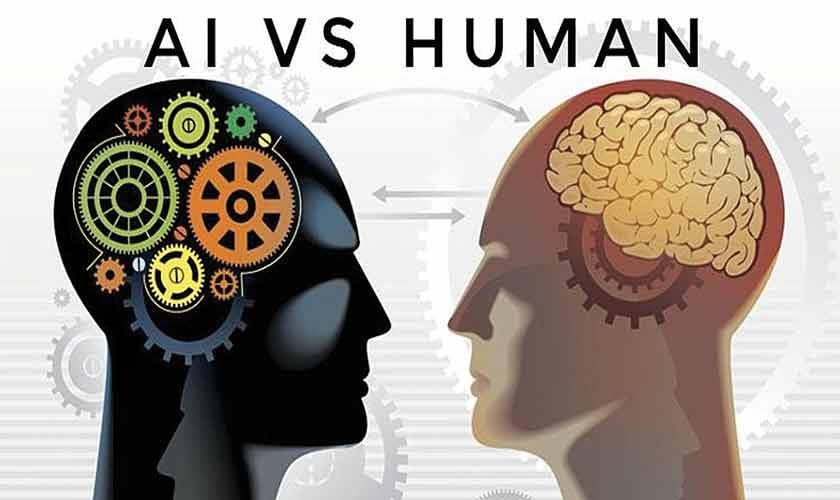**The Hidden Harms of Artificial General Intelligence: A Call for Awareness and Action**
*“The people who shut their eyes to reality simply invite their own destruction; anyone who insists on remaining in a state of innocence long after that innocence is dead turns himself into a monster.”*
— James Baldwin
—
The sudden rise of artificial general intelligence (AGI), particularly in the form of large language models (LLMs), has sparked intense debate regarding their benefits and potential harms. However, the risks associated with these technologies are not well understood, especially by the general public.
We are already witnessing an increase in AI-related disasters across several domains, notably impacting human intellect and self-expression. A research paper from Cornell University titled *Your Brain on ChatGPT* concludes that unregulated use of such tools could stunt the development of human intelligence. Specifically, it could erode critical thinking skills among the masses.
Large corporations and political elites stand to gain substantial advantages from an uninformed and intellectually weakened populace—one that merely absorbs curated narratives designed to advance their agendas. The easiest tool to facilitate such indoctrination is the biased programming of chatbots.
—
### The True Cost of LLMs
The mass adoption of LLMs comes at a significant cost—one that goes beyond cognitive impairment. It includes grave environmental risks, democratic decline, and exploitation of public resources.
Karen Hao, American journalist and author of *Empire of AI*, identifies these critical issues in her deeply researched work. She highlights the depletion of freshwater and land resources caused by unchecked use of data centers operated by some companies for AI development. These corporations function like techno-authoritarians, trampling democratic principles by neglecting to consult local communities about irreversible environmental damage caused by excessive energy and natural resource consumption.
The Environmental and Energy Study Institute (EESI) estimates that a single data center can consume as much as five million gallons of water per day—equivalent to the daily water use of a town with 10,000 to 50,000 residents.
The Citizen Action Coalition, an Indiana-based non-profit organization, has pointed out that many AI companies use shell corporations or secret project code names to covertly establish data centers, thereby denying the public timely knowledge of their plans until local approvals are secured.
The Hoosier Environmental Council warns that generative AI data centers are “hyperscale” facilities that demand enormous amounts of water and energy—which are expanding rapidly. It is reasonable to anticipate increased exploitation of public resources and human labor, along with a potential exponential rise in carbon emissions.
—
### Energy Consumption and Corporate Narratives
The energy demands of LLMs have been explored in detail by Sourabh Mehta in his article *How Much Energy Do LLMs Consume? Unveiling the Power Behind AI* for the Association of Data Scientists.
Meanwhile, Oren Etzioni, co-founder of Vercept, addressed some common myths about AI in an interview with the Harvard Business School Institute for Business in Global Society. He suggested that concerns about AI’s harm stem mainly from misinformation rather than real threats. His advice: learn to use AI tools efficiently to avoid being left behind.
However, such assertions reveal a profound fallibility. CEOs profiting from AI often market the technology as a mere productivity enhancer, downplaying the risks.
Etzioni’s claim that the public cannot differentiate fiction from reality—and that fears of sentient AI are flawed—ignores the present, more immediate issues. Chatbots are not controversial because they resemble fictional sentient antagonists, such as Harlan Ellison’s 1967 character AM. Rather, their threat lies in their proven intellectual unreliability, negative impact on users’ cognitive abilities, contribution to income inequality, and violations of privacy and data ownership.
—
### The Way Forward
What must be done to keep pace with these rapid technological changes? Maintaining autonomy in an AI-driven world requires two essential steps: individual resistance and collective action.
**Individual Resistance**
This is the simplest and most personally rewarding step. It involves relying on your own intellect and reasoning rather than outsourcing mental effort to chatbots. Avoid succumbing to dopamine hits from endless mental stimulation on addictive social media platforms. Instead, invest time and energy into reading classic literature with the goal of enhancing focus, cognition, and literacy.
Let the words of Homer, Goethe, Lermontov, Thucydides, Milton, Stendhal, Cellini, and others transform your mind.
Remember: chatbots are simply predictive algorithms whose capabilities depend on the volume of data they absorb. They do not possess original thought—a uniquely human trait. Even generative AI models, as explained by the International Business Machines Corporation (IBM), create “original” content only by training on vast amounts of raw data. IBM itself is a platform designed to help businesses assimilate AI technologies.
—
**Collective Action**
Self-preservation on a collective scale is much more challenging. It requires determination and resilience. However, it holds great promise, offering the public a voice in how these technologies are integrated and to what extent they operate.
Collective efforts can help secure protections for civil liberties, human rights, intellectual freedom, and labor rights.
—
### In Conclusion
We stand at the cusp of a new era. The conversation surrounding AI should focus on implementing universal human rights safeguards and safety measures in an increasingly AI-operated world.
Ignoring the realities and risks of artificial intelligence—a luxury we cannot afford—will only lead us toward unintended destruction. Let us approach this new frontier with open eyes and a collective commitment to shape AI’s development responsibly.
https://www.thenews.com.pk/tns/detail/1348325-the-ai-threat


